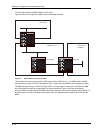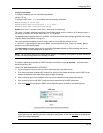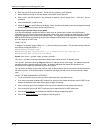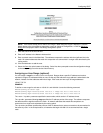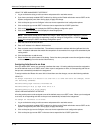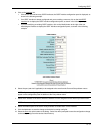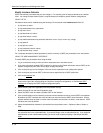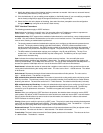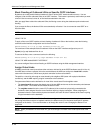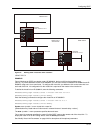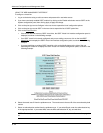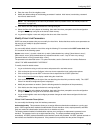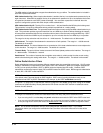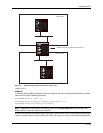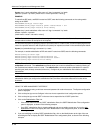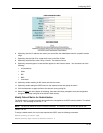
Advanced Configuration and Management Guide
Block Flooding of Outbound LSAs on Specific OSPF Interfaces
By default, the routing switch floods all outbound LSAs on all the OSPF interfaces within an area. You can
configure a filter to block outbound LSAs on an OSPF interface. This feature is particularly useful when you want
to block LSAs from some, but not all, of the interfaces attached to the area.
After you apply filters to block the outbound LSAs, the filtering occurs during the database synchronization and
flooding.
If you remove the filters, the blocked LSAs are automatically re-flooded. You do not need to reset OSPF to re-
flood the LSAs.
NOTE: You cannot block LSAs on virtual links.
USING THE CLI
To apply a filter to an OSPF interface to block flooding of outbound LSAs on the interface, enter the following
command at the Interface configuration level for that interface.
HP9300(config-if-1/1)# ip ospf database-filter all out
The command in this example blocks all outbound LSAs on the OSPF interface configured on port 1/1.
Syntax: [no] ip ospf database-filter all out
To remove the filter, enter a command such as the following:
HP9300(config-if-1/1)# no ip ospf database-filter all out
USING THE WEB MANAGEMENT INTERFACE
You cannot configure filters to block flooding on OSPF interfaces using the Web management interface.
Assign Virtual Links
All ABRs (area border routers) must have either a direct or indirect link to the OSPF backbone area (0.0.0.0 or 0).
If an ABR does not have a physical link to the area backbone, the ABR can configure a virtual link to another
router within the same area, which has a physical connection to the area backbone.
The path for a virtual link is through an area shared by the neighbor ABR (router with a physical backbone
connection), and the ABR requiring a logical connection to the backbone.
Two parameters fields must be defined for all virtual links—transit area ID and neighbor router.
• The transit area ID represents the shared area of the two ABRs and serves as the connection point between
the two routers. This number should match the area ID value.
• The neighbor router field is the router ID (IP address) of the router that is physically connected to the
backbone, when assigned from the router interface requiring a logical connection. When assigning the
parameters from the router with the physical connection, the router ID is the IP address of the router requiring
a logical connection to the backbone.
NOTE: By default, the HP router ID is the IP address configured on the lowest numbered loopback interface. If
the routing switch does not have a loopback interface, the default router ID is the lowest numbered IP address
configured on the device. For more information or to change the router ID, see “Changing the Router ID” on
page 6-25.
NOTE: When you establish an area virtual link, you must configure it on both of the routers (both ends of the
virtual link).
8 - 20



